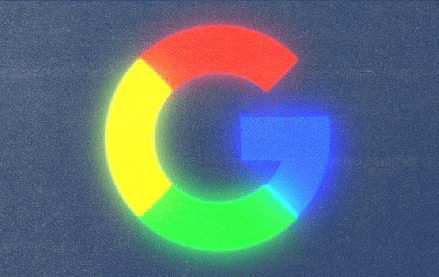Scale-hungry Facebook video publishers are in trouble if they don’t think long term

Unilad, the top video publisher on Facebook, has a video of a raccoon twirling in a tutu. The 10-second clip is cute, funny and has been viewed more than 11 million times.
Most of the web video industry would call that video a success — and in a way it is. The video was watched and shared by a lot of people, and the fact that it only accounts for a fraction of the 3.1 billion views Unilad gets every month on Facebook means the publisher is doing something right.
Except Unilad probably didn’t make a lot of money from that video, and isn’t likely to in the long run either. Ad revenue from Facebook through its suggested videos product is still incredibly small, publishing sources say, and user-generated clips aren’t a format that can be licensed to different platforms and territories. Which means as soon as the video is finished, it gets lost in the growing sea of content on Facebook, never to be thought of again.
And that’s the ugly truth in the age of Facebook video: publishers that chase quick scale without an eye toward establishing a long-term video business are in for a lot of trouble.
Scale, but to what end?
Facebook has done a remarkable job in allowing publishers — whether they have a background in video or not — to quickly grow huge audiences using cheaply made short videos. It’s not just user-submitted animal videos, either; there’s an entire format that Facebook has very quickly popularized: Short, silent videos with striking imagery at the beginning and closed-captioning throughout so users can passively watch it in their news feeds. Unilad has plenty of videos that follow this format, so do other publishers in the billion view club including Business Insider, BuzzFeed and NowThis. Churn enough of these videos out and it’s a pretty path to get to a billion views.
“There’s an entire business being built on publishers licensing some footage, stitching it together, and putting it up on Facebook. It’s very economical and scale remains the easiest thing to sell,” said David Spiegel, svp of sales and brand strategy for Great Big Story, a video startup backed by CNN. “But just because a magazine has more pages in it, it doesn’t make it the best magazine.”
Publishers that have embraced Facebook video argue that by adopting this format they are making content that fits the Facebook user experience. And by growing an audience on Facebook now, they are set up well to make money once the platform establishes a better ad revenue-sharing model. Plus, with Facebook easing restrictions on sponsored videos, it’s already possible to make money on Facebook by making custom content for advertisers.
But right now, most of the videos being made for Facebook are only helping Facebook, which wants users to keep coming back to its site.
“Unless you have a big media company that steps in and buys you, there’s going to be a lot of roadkill,” said Peter Csathy, founder of media advisory firm Creatv Media. “If a publication has reach, that’s still interesting to a larger media company, which can just make it part of a larger portfolio.”
The long life of a TV show
Video for a long time meant movies and TV shows, where the economic model is rock solid.
Take, for instance, the economic lifespan of a successful TV show. A successful TV show is going to air for multiple seasons, which means the content owner — let’s say in this instance it’s the TV network airing the show — will make money on ads that air during each episode. This includes when the episode first airs, repeats and is put up on the network’s online platforms. Eventually, the network will sell the show in its second window, which today usually means Netflix, Hulu, Amazon and even airlines. In many cases, the network will also sell the show internationally either directly or by licensing the rights to a distributor, which will pay a per-episode fee as well as share a cut of the revenue made from any distribution deal. If the show’s format can be replicated, the network can also make different versions of it in different markets. There’s also merchandising. And if the show makes it past 100 episodes, it can then be sold into syndication, at which point the content owner is getting “fuck-off money,” said Chris Vivion, partner of TV and digital production company Space Station.
In other words: there are a number of ways for TV content owners to make money. Even unsuccessful shows can make their money back by properly packaging a show for different platforms and markets. “Licensing to a second window alone can help you recoup anywhere from 25 to 50 percent of your production cost,” Vivion said. “It’s almost all profit at that point.”
If there is a reason BuzzFeed, Refinery29 and scores of other big-time digital publishers want to get on TV, this is why. “It’s still everyone’s secret goal to take a digital format and get some TV money,” Vivion said.
Video as a long-term strategy
No one would compare most made-for-Facebook videos with TV, nor should they. And that’s unfortunately the point. Until social platforms came along, the video business was hard to do well. But if you did it well, there were a lot of ways to make money. On Facebook right now, there are only two ways: sponsored videos and the suggested video product.
To be fair, some big digital publishers are doing more than just silent, closed-captioned videos. BuzzFeed is currently making a movie based on a popular online story from the site and is also making an original series called “Modern Sex” for Verizon’s Go90 platform. Refinery29 produces dozens of original series under its R29 Originals program and is also making “Ballin’ on a Budget” for Comcast’s Watchable platform. In both cases, the companies retain the rights to resell their digital series in later windows.
“The first product iteration of any new type of video is very rarely something you try to build a business on,” said Andy Tu, CMO of Defy Media. “Ten years ago on YouTube, no one was thinking what the long-term library value of those videos were. It’s same here with Facebook, you’re building a beachhead for future opportunities.”
MiTú is a textbook example of a publisher approaching the social space in a smart way, according to Tu. The Latino content network had a popular Facebook series called “Cholos Try,” which it was then paid by Comcast to make an adaptation for Watchable.
Defy itself has a YouTube series called “Honest Trailers,” which has more than a 170 episodes today. The company has taken those episodes and sold them to Sky TV in the U.K. It’s also made the show available through the ScreenJunkies subscription app, which is also available through Amazon.
For Go90, Defy is producing several series including “Super Fan Builds” and “Clevver Now.” Of the two, Defy already knows it will be able to sell “Super Fan Builds” in later windows.
“It’s core to our business,” said Tu. “We never go, ‘Oh, it’s live, let’s never think about it again.’ We’re looking to build things that have legs for another platform, another window, another way to monetize it.”
More in Media

WTF is ‘query fan-out’ in Google’s AI mode?
One major way Google’s AI Mode search feature differs from its traditional search engine is a complex technique called “query fan-out.”

Media Briefing: DoubleVerify casts itself as news ally in Cannes — as scrutiny mounts
At Cannes Lions Festival of Creativity this week, the tech vendor has been working to convince advertisers — and skeptics — that it can help fix the brand safety system, which many say it helped break.

The Guardian bets on unified programmatic ad selling as curation gains ground
The Guardian’s CPMs have been surging as a result of accelerating PMP selling and curation, the publisher claims.





